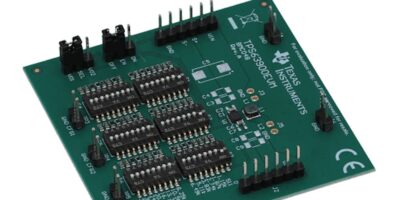DC/DC buck-boost converter extends battery life and claims lowest IQ
Up to three times more output current can be achieved, using the TPS63900 DC/DC buck-booster converter, says Texas Instruments. Engineers can also maximise usable battery capacity as it maintains what is claimed to be industry’s lowest quiescent current (IQ), 75nA, with 92 per cent efficiency at 10 microA. It can be deployed in building automation and grid infrastructure applications, says Texas Instruments.
It is claimed to be the industry’s first DC/DC buck-boost converter to combine programmable input current limit and integrated dynamic voltage scaling to extend battery life by at least 50 per cent.
The TPS63900’s low IQ is combined with sufficient output current to send signals between connected smart grid applications and a network via commonly used radio-frequency standards (narrowband IoT, Bluetooth Low Energy, and long-range and wireless M-Bus). This helps engineers conserve energy in wirelessly connected applications that run on batteries.
It integrates dynamic voltage scaling to deliver power while keeping the system at the minimum voltage required to operate efficiently. This maximises battery life and reducing required maintenance for industrial applications.
Power architectures can be optimised for low power sensors and wireless connectivity ICs, supporting applications that can operate for at least 10 years using the primary battery, confirms Texas Instruments. For example, the buck-boost converter can be paired with TI’s MSP430FR2155 in security sensors or wireless IoT sensors to monitor the vibration of water pumps for predictive maintenance and help drive down costs.
The low IQ buck-boost converter integrates a programmable input current limit enabling the TPS63900 to efficiently charge supercapacitors to buffer peak loads, protect battery capacity, and extend system lifetime and performance. (Fully charged supercapacitors help buffer the energy required to operate components that require high peak currents, such as those found in motorised smart locks.)
It can also improve reliability by reducing up to 50 per cent of the output-voltage ripple caused by load transients. The fast transient response maintains low IQ while keeping the internal regulation loop active, explains Texas Instruments. This is beneficial for always on applications which need to consume high power in a short amount of time when sharing data, for example, smart water and gas meters.
The TPS63900 is now available through TI and authorised distributors in a 2.5 x 2.5mm wafer small outline no-lead (WSON) package.
A TPS63900EVM evaluation module (pictured) is also available.




